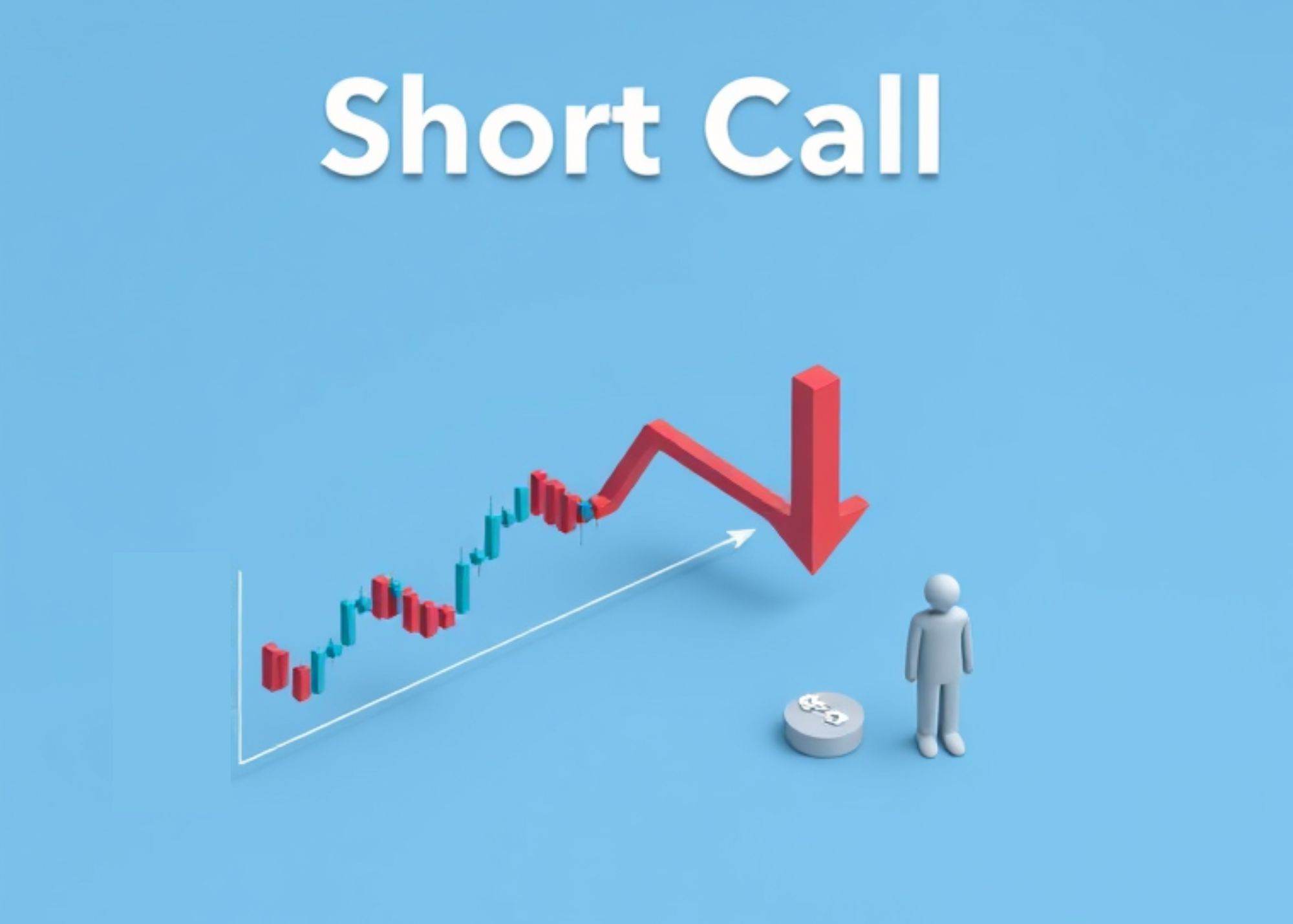What is Short Call?

Options are flexible instruments that allow traders to earn whether they have a bullish or a bearish outlook on the market. Traders can also make use of numerous strategies through call and put options to capitalise on these market movements. In this article, we will take a look at one of the most common bearish option trading strategies. Read on to learn all about the short call option trading strategy.
Short Call Strategy
To understand the short call strategy, let’s first understand shorting.
Short-selling or shorting refers to a trader selling a security which he does not own and then buying it back. Traders short a security when they are bearish on it and expect its price to decline. As a result, the more the price of the security declines, the more beneficial it is for the short seller.
In options, the person who sells an option is known as the writer. The trader who initiates the short creates a new contract between the buyer and the seller. An option is a contract that gives the buyer the right but not the obligation to buy or sell an asset at a predetermined price on a specific date.
In other words, when a trader shorts a call option, he is betting that the price of the underlying will decline while the option buyer is betting that the price of the underlying will increase.
An increase in the value of the underlying asset will lead to an increase in the call option’s premium which will result in a loss for the option seller. However, if the underlying asset’s price declines and is below the strike price of the shorted call option, the option will expire worthless, allowing the trader to pocket the entire premium.
Trading the Short Call Strategy
Let’s learn how to trade the short-call strategy with the help of an example.
Suppose, stock ABC is trading at Rs 200. A trader expects the price of the stock to decline to Rs 150. Since the trader has a bearish outlook, he sells a call option of the strike price of 210 which is trading at a premium of Rs 300.
If ABC’s price declines from Rs 200 to Rs 150, the call option will see a decline in its premium. If the stock price remains below Rs 210 on expiry, the call option will expire worthless allowing the trader to pocket the premium of Rs 300.
However, if the price of ABC rises from Rs 200 to Rs 250, the call option will become in-the-money (ITM) and will see a rise in its premium which will result in a loss for the option seller. Since the call option’s premium can potentially have an unlimited upside, the trader is exposed to an unlimited loss.
From the example, we can understand that the short call option strategy is profitable when the underlying asset’s price declines which allows the trader to pocket the premium. However, if the underlying’s price moves above the sold call’s strike price, the trader is exposed to unlimited losses.
Also Read : What Is Short Put Option Strategy?
Difference between a Short Call and a Long Put
Although the short call option strategy and the long put option strategy are both bearish in nature, there are some key differences between the two.
The primary difference is between the contracts. The call option gives the buyer the right to purchase a security at a predetermined price on a specific date, while the put option gives the buyer of the option the right to sell a security at a predetermined price on a specific date.
Both, shorting a call and buying a put benefit from the decline in the underlying asset’s price. However, the difference is that a short call will benefit when the premium of the call option declines while the put buyer will benefit from an increase in the premium of the put option.
Risk is another key factor of differentiation as a call seller is exposed to unlimited risk while the maximum loss of the put buyer is limited to the premium he paid for the option.
The Impact of Theta
Theta, also known as time decay, is an Option Greek that measures how quickly the value of an option decreases. Since options are derivative contracts, they have no intrinsic value. Over time, an options contract will lose value. Theta has the highest impact on at-the-money (ATM) options and its impact decreases as the option moves more in-the-money (ITM).
The impact of theta is useful for call sellers as they can plan their trades by taking theta into consideration. Over time, the impact of theta will decay the premium of the call option, making the trade relatively safer.
Also Read : What is Hedging with Futures?
Things to Keep in Mind While Short Selling Call Options
- The short-call option strategy is beneficial when the trader has a bearish outlook on the market.
- A trader should be aware that a short-call option has limited profits and potentially unlimited profits.
- Hedging a short-call position can help reduce risks. Traders can purchase call options or own the underlying security to reduce the risk.
- Time value or theta plays an important role in the speed at which the option premiums decay.
- Since option selling can result in significant losses, it is important to have strict stop-loss orders in place.
Conclusion
Through shorting a call option, a trader can pocket the premium which is especially helpful in bearish scenarios. Despite the potential for high losses, selling call options can be a reasonable way for traders to generate returns. However, it is of utmost importance to manage risk effectively to preserve your capital.
Disclaimer: This content is solely for educational purposes. The securities/investments quoted here are not recommendatory.